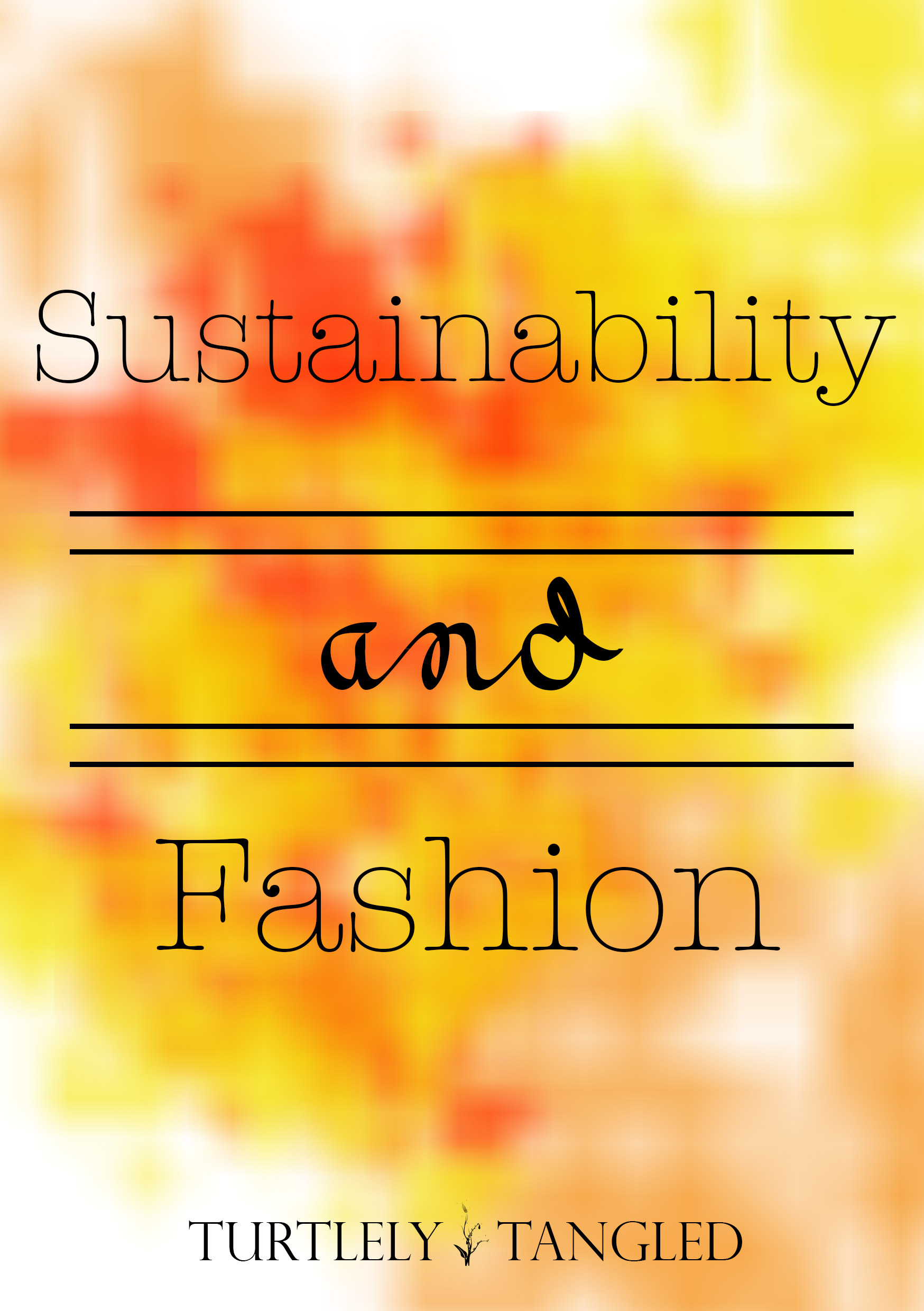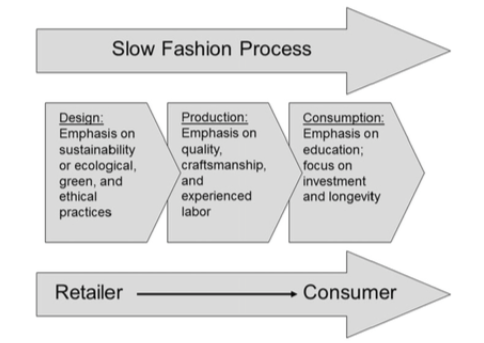
“I don’t think that fashion can ever be sustainable.” This is just one of many quotes I have collected while writing my research report about the compatibility of sustainability and luxury. As a millennial myself, it made sense to reach out and concentrate on ‘my generation’ that supposedly is very concerned about sustainable practices. But what exactly is sustainability? And how does sustainability tie in with fashion?
The most cited definition can be found in the Brundtland Report (1987) by the UN and is the following: “Sustainable development is development that meets the needs of the present without compromising the ability of future generations to meet their own needs“. In other words, being sustainable means that nothing is lacking now nor in the future. So really, sustainability is about creating a balance between giving and taking. And sadly, this is easier said than done.

Further to this definition, there is also the so-called triple bottom line which is composed of the environmental, social and economic pillar. Often, when people refer to sustainability, they automatically think of regeneration and the environment. This is also why many people see the term of “being green” as synonym to being sustainable. Nevertheless, there is much more that has to be considered. It’s not only nature or animals whose resources are being exploited. There are also the people in the supply chain, growing the raw materials and manufacturing the actual product. And finally, there is the economic pillar that takes the fact into account at the end of the day, it still is about money because we are living in a world where you can’t survive without making profit.
So far, so good. So in order to make fashion more sustainable, brands and retailers have to work with sustainably grown and sourced materials and pay fair wages to all of their employees while still making enough margin for them to sustain. That’s all that takes, right?
Unsurprisingly, the answer is no. There has been a long fought conversation about who is responsible for more sustainability. While some people claim that it is the retailers, others say that it is the consumers or the government. But it’s always easy to blame other people and just sit back and watch how nothing is improving. The truth is, that it is a shared responsibility. In order to something to change, someone has to start. And luckily, there has been a lot done already. But still, this is just only the beginning.
So, what can we as consumers do? Technically, we, as consumers, have a huge power over retailers. Because ever since we have changed from a product-oriented economy to a market-oriented economy we don’t rely on retailers anymore. It now is the retailer that comes to us and asks us what we want. We are dictating the market. Yes, there are trend agencies out there that will predict what trends there are in the future but it is not them deciding on trends. There is no top-secret club that decides that what will be in season or not. Yes, there are many people making suggestions and sharing inspirations but at the end of the day, it is the consumer that decides what is on trend and what not. Because fashion is not just clothing or accessories. Fashion is a visual reflection of our society.
However, sustainability is a tricky thing. Because, as much power as we have, we can’t just go out there and demand sustainability. Yes, we can ask retailers to use more sustainable materials. Yes, we can ask them to pay fair wages. But that is only half the bill. Because in fact, sustainability is not just about demanding someone to do something. It is also about doing it yourself. If you keep asking your neighbour to turn down their loud music but you are playing even louder music, how is that supposed to work? It is essentially the same thing. Coming back to the Brundtland definition, sustainability is ultimately about making things last. And that applies to the natural resources as much as to the products they are turnt into. It does make sense. Because the better you are taking care of your things, the longer they will last and the longer you will use it, making it needless to tap into new resources that can instead be used for future generations. In theory, it makes sense. In reality, the low prices make it way too tempting to purchase something new and feel rich as you are able to do so.

And that is where slow consumption comes into play. Many people underestimate the importance of post-purchase measures. Because what the consumer decides to do is equally as important as the design stage or the production stage of a garment. Imagine that someone would buy the most sustainable garment there was: sustainably sourced material, low carbon footprint, a transparent supply chain that shows that it was produced ethically and fairly. Everything is as sustainable as it can be. And now the consumer comes into play, sees that garment and decides to purchase it. But how often will the garment be worn? Once or twice? Not at all? Until the it is falling apart? This is the crux of the matter: as sustainable as a retailer can make a garment, it can instantly be made unsustainable by the consumer. And vice versa, as “unsustainable” a garment was produced, a consumer can wear it sustainably, although this is harder to achieve in reality due to certain occurring issues, such as the quality.
Sustainable fashion means falling in love with your garments. To commit to them and care for them to make them last as long as possible. It means having fun with fashion and the outfits you can create by combining your favourite pieces. Sustainable fashion means realising what you want does not equal what you need and that you can appreciate things without owning them. Yes, it can be influenced by trends and newness but it is not dictated by the speed of them. Sustainable fashion is timeless and beautiful and brings joy. Sustainable fashion cares about people. It creates jobs that are fairly paid to guarantee a decent life. It celebrates the wonderful skills and unique talents that people have acquired, from designing to sewing to traditional craftsmanship. Sustainable fashion cares about the environment and respects its resources. On the other hand, sustainable fashion does not mean that it is 100% perfect and has zero impact. It is the realisation that every single little choice we make everyday is having a consequence somehow and somewhere but it is entirely up to us how big that impact is.
In summary, sustainability is a way of thinking, not only for retailers and manufacturers but also for consumers. The biggest mistake is to believe that it is entirely up to the retailers. It is true that we can’t do anything without the help of retailers but at the same time they can’t do anything without the voice to the customer. And that is why we need to start now. We can’t close our eyes and ears anymore and say that no one cares about sustainability because sooner than later it will be too late. And really, we need to start with ourselves and stop blaming everyone else for the changes we are not seeing.


